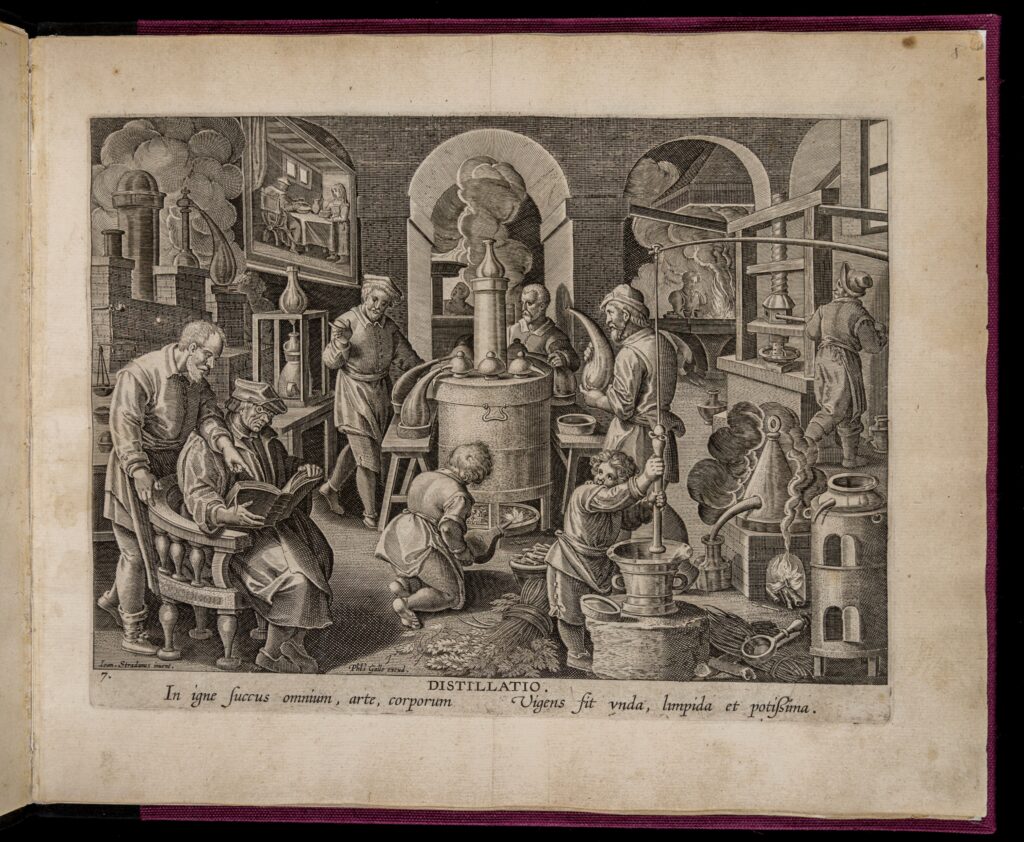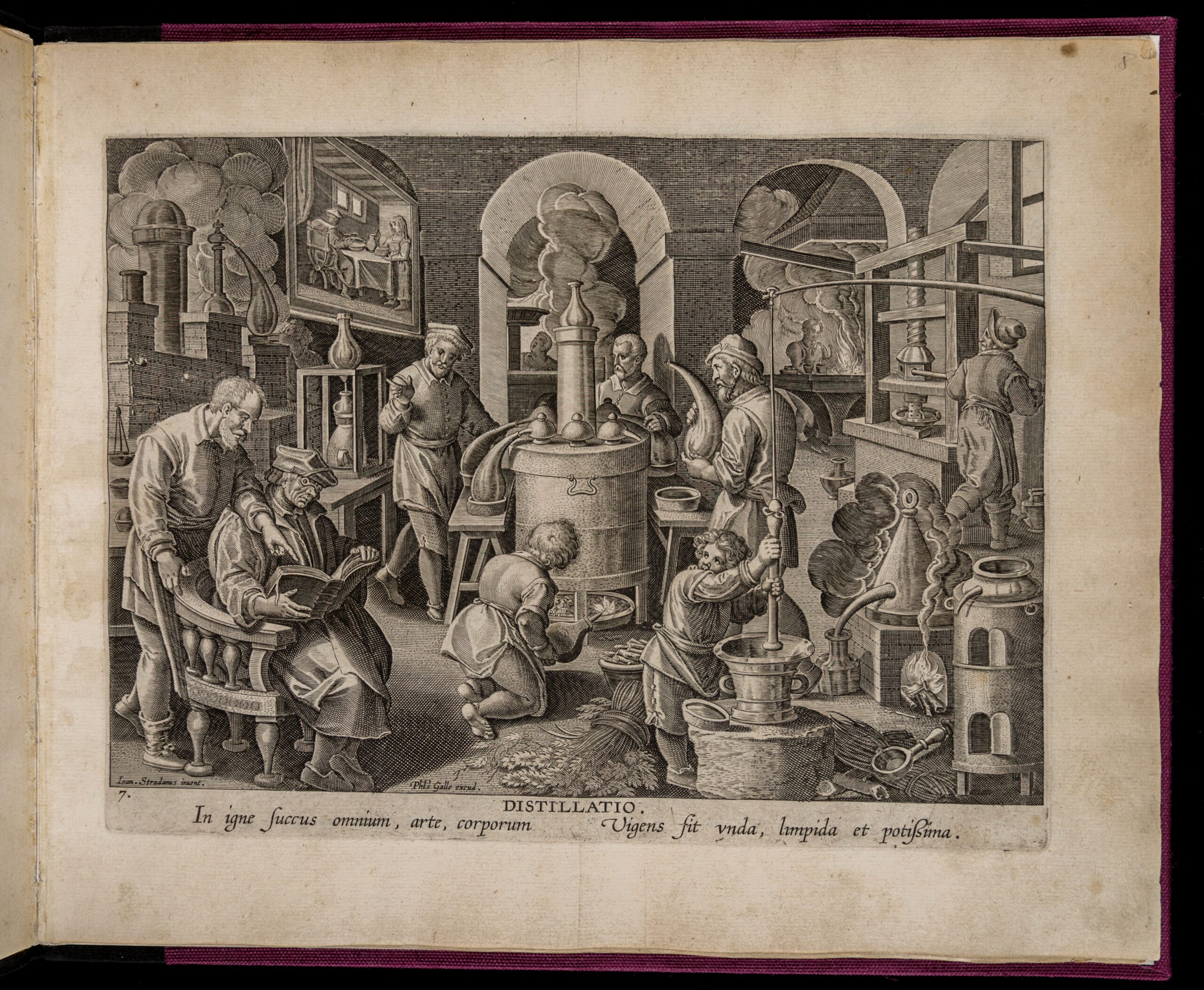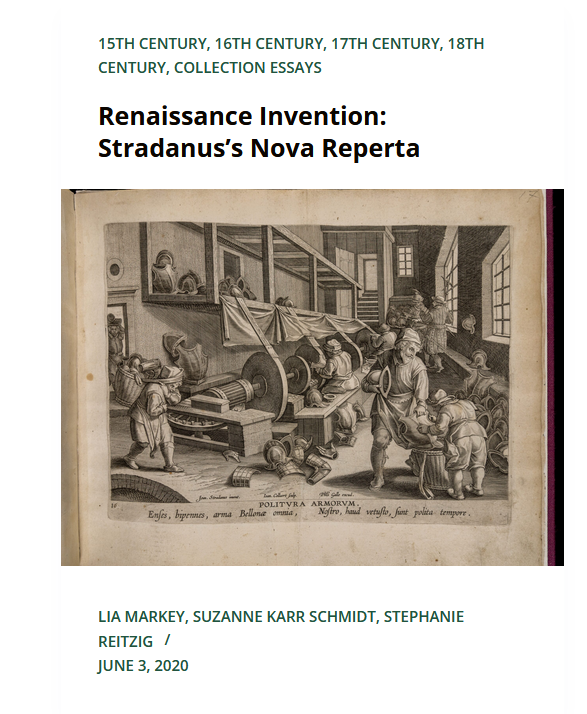Themes
Distilling
Food History
History of Medicine
History of Science
Periods & Events
Early Modern Period
Skills & Document Types
Image Analysis
Image & Text Comparison
Materials – Available for Download in the Downloads Tab:
- Copy of the activity “Distilling in Early Modern Europe”
- Access to a computer and projector to display source images
- Optional: copies of source images for students
- Image analysis worksheet
Process
This activity can be used as part of a lesson on the history of science, history of medicine, or food history. It can also be used as part of instruction on reading and gathering information from primary sources, particularly images.
Display the images. Give students time to examine them, generate questions, and write notes. Encourage them to look at the people, objects, and text in each image. You can use the background material at the beginning or the end of the activity, whenever you think it will encourage students to engage more deeply with the images. Students can record their thoughts on the image analysis worksheet if that helps.
Image 1: Nova Reperta, “Distillatio” (c. 1580-1600)

Caption: “In igne succus omnium, arte, corporum / Vigens fit vnda, limpida et potissima.”
Translation: “Through the fire of industry, the vital essence of all bodies becomes clear and potent liquid.”
This image depicting distillation is one of nineteen in a series titled Nova Reperta (New Inventions of Modern Times). This series depicts discoveries and innovations in the modern world (the late sixteenth century). Despite being a craft that had existed for thousands of years, distillation was included in the series. The plate “Distillatio” depicts several stages of distillation. This scene shows a laboratory setting in which alchemical work rather than more general distillation tasks took place. Note the volume and variety of tools and equipment stationed around the room; the space is clean and fully functional. The image depicts stoves, furnaces, and a bain-marie. Other important tools dot the room, like a mortar and pestle, scale, and bellows. The younger workers are assigned to menial tasks such as tending the fires and beating ingredients in the mortar; the more experienced workers are distilling. A man with glasses, an alchemist, is seated in the foreground reading a large book. Another man also consults the book. A digital guide to this image and others in the Nova Reperta can be found here.
Image 2: The newe iewell of health, title page (1576)

The newe iewell of health (1576) is an English translation and compilation of several works by the Swiss physician, philosopher, and natural historian Conrad Gessner. George Baker, an English surgeon who published many works on distillation and medicine, compiled and translated the book. The newe iewell of health is a treatise on distillation, detailing what it is, how to distill, and many recipes for distillations, primarily for medical use. Much of the work is structured as an instructional text for skilled distillers, particularly those practicing or serving the medical profession. Gessner and Baker’s learned backgrounds are revealed on the title page: an allegorical woman depicting alchemy, Alchymya, is rooted in the Classical learned tradition as well as the contemporary scientific practice of alchemy. Alchymya is dressed in Classical attire, is surrounded by the tools of her trade: a furnace, bellows, alembics, and more. Her presence between the sun and moon suggests the centrality of distillation, or perhaps that mastery of the practice balances all bodies. The entire 1599 edition of The newe iewell of health is digitized here.
Image 3: Oeconomia ruralis et domestica, distilling equipment (1680)

Caption: “Wie man ein Balneum Maris oder Mariae in einem Zuber machen solt.”
Translation: “How to make a Balneum Maris or Mariae in a tub.”
Johann Coler’s Oeconomia ruralis et domestica (1680) is a very large book originally published in six parts between 1593 and 1603. It is a German-language encyclopedia of country household management and includes sections on agriculture, husbandry, gardening, cookery, childbirth, childrearing, dream interpretation, distilling, and much more. Coler provides textual descriptions of the distilling process in the setting of a large and affluent household. The text is accompanied by many images illustrating the types of furnaces and distilling configurations. Note the clear imagery that is meant to be descriptive and instructive for an industrious home distiller. It depicts a Balneum Maris, or double-boiler, method of heating a distilling apparatus. The entirety of this section on distilling is digitized here.
Potential Questions
- What kind of image is this? Is it illustrating text in a book? Was it supposed to stand on its own? What evidence from the image backs up your interpretation?
- When and where is the image from?
- Are there people in the image? Who are they?
- What kind of equipment or tools are shown? Why?
- What does the text add to your understanding of the image?
- Who would have looked at these images when they were printed? Why would they have looked at these images? What makes you think that?
- Is the image teaching or showing the viewer something about distillation?
- What questions do you have about the images? Where could you find answers or more information?
*Translation assistance provided by Daniel Hobbins and Helga Müllneritsch.
Background
Distillation is a process used to convert liquid into a vapor that is condensed back into a liquid. The process involves heating a liquid (or combination of liquids and/or solids) in a vessel set over a heating source. When the liquid reaches the right temperature, it will turn into a vapor and rise up and exit the vessel. While traveling through the exit (usually a narrow spout), the vapor cools down and becomes a liquid again. The liquid, or distillation, is captured in another container. This process extracts the most potent essences of a mixture.
In the present day, distillation is a technique most often associated with chemical laboratories and the production of alcoholic spirits. Centuries ago, however, people performed this practice in both household kitchens and professional settings, like distilleries and apothecaries (early pharmacies). Distilling could produce purified liquids for culinary, medicinal, and cosmetic applications, as well as refine metals and help people explore scientific ideas through the practice of alchemy (an early form of chemistry). While many people could perform simple distillations, complex distillations were highly technical procedures left to highly skilled practitioners at home and in professional settings.
Some distilling was very simple, and only required a clay pot “still” and a basic heating source. Other distilling that produced multiple final products was complex and required specialized equipment and heating sources. Distillers relied upon equipment like cucurbits (gourd-shaped containers), alembics (specialized heads that were fit on top of cucurbits), and receivers (which captured the final distillation. These items could be assembled into complex devices, particularly when paired with various heating elements, like a furnace or a bain-marie (also called a Balneum Maris or a double boiler).
Many early modern recipes for distillations produce waters, spirits, and syrups that could be used in many ways. Flower waters distilled from water and flowers, for example, were used in perfumes, as facial cleansers, in cooking, and as ingredients in medicinal recipes. Other early modern distillations, like aqua mirabilis and Dr. Steven’s Water, were used exclusively for medicinal healing. Still other distilled products, like gin and brandy, were consumed for pleasure.
About the Author
Sarah Peters Kernan, PhD, is a Scholar-in-Residence at the Newberry Library. Her research focuses on cookbooks and culinary activity in medieval and early modern England. She is an editor of The Recipes Project and hosts the Around the Table podcast. Sarah regularly collaborates with The Newberry Library on teaching and digital learning projects.
Download the following materials below:
- Copy of the activity “Distilling in Early Modern Europe”
- PDFs with images from Nova Reperta (high-resolution version), The newe iewell of health (high-resolution version), and Oeconomia ruralis et domestica (high-resolution version)
- Optional: copies of source images for students
- PDF of image analysis worksheet
Related Lessons
Related Collection Essays
Additional Resources on this Topic
- Inside the Alchemist’s Workshop, JSTOR
- Alembic Fragments, Jamestown Rediscovery: Historic Jamestowne
- Searching for the Original Use of a Mysterious Glass Vessel, The Metropolitan Museum of Art
- Distillation Series, The Recipes Project
- Distilling Rose Water with a 17th Century Alembic, Video from JYF Museums







